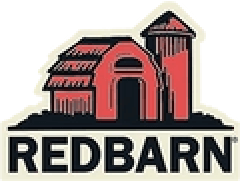
How To Safely Give Your Dog a Bone
Picture this.
You have just finished a nice rack of ribs. You look over, and see your four-legged friend staring at you with the eyes of an angel. You want to give them the bones but then you wonder, are bones safe for dogs to eat?
Historically, bones are associated with dogs. Their puppy dog eyes might tempt you, but, did you know giving your dog the wrong kind of bone can be extremely hazardous? Even bones commonly found in households could put your dog at risk. So, what bones are safer to give your dog? What should you look for when giving your dog a bone to chew on? How can you practice bone safety?
Let’s get right down to the bone!
Why is bone safety so important to Redbarn?
Redbarn is one of the largest manufacturers of dog bones in the USA. In addition, we have a wide selection of over 150 different chews for dogs, including bones. That’s a lot of chews! This is why educating our customers about bone safety, and our many different chews is so important to us. We are committed to helping you find the right chew for your pet.
What are the benefits of giving my dog bones?
Giving your dog bones helps satisfy your dog’s natural desire to chew. Furthermore, bones are a stimulating alternative for dogs that take their innate urge to chew out on shoes and other household items. Bones can give your dog the enjoyment and leisure they seek, without the costly destruction of property that can come with it.
While it won’t replace regular visits to the vet or teeth cleanings, occasionally chewing bones can help keep your dog’s smile healthy. Chewing bones can also help prevent plaque buildup. The right bone can help keep your dog’s teeth whiter and reduce the chance of gum disease. However, regular brushing is still essential to keep your dog’s pearly whites extra sparkly.
Did we forget to mention bones are fun?! They are the ultimate boredom buster. Bones can provide your dog with mental stimulation and entertainment. Bones can be a good distraction for dogs that scratch or lick their paws excessively or suffer from separation anxiety.
Chewing bones can come with many advantages. With all of these benefits, you may be asking yourself, how can bones be unsafe for dogs? This is an excellent question!
How can bones pose a threat to your dog?
All dogs chew on bones differently, according to their chew personality. Some dogs chew quickly, some slowly. Others take large chomps, while many dogs take smaller bites. Bones can pose a threat to your dogs because they can splinter or break when a dog chews down the bone. That’s how bones can become a choking hazard. This is especially true for home-cooked bones like poultry, pork, and fish.
When your dog swallows the shards from home-cooked bones, they run the risk of internal injury. Bone fragments can get stuck in the intestines causing blockage and constipation. Not only can this cause a great deal of pain for your pet, but it could also result in costly vet visits or even surgery. Ouch!
Even though there are bones that pose a threat to your pet, knowing what to look for in a bone can keep your dog safe, and help you decide what’s an appropriate choice for your dog.
What should I look for in my dog’s bone?
If you approach a wall full of bones, would you know what bone is the safest pick? No worries, we’ll throw you a bone.
Bones are a great dog chew because they are tough and long-lasting. In order to pick out the safest bone for your dog, you must know what to look for in a bone. Ask yourself a few simple questions.
Can you easily break or bend the bone? If you can, so can your dog. Think, how thick is the bone? The density of the bone is a key factor when looking for the right bone for your dog. The thicker the bone, the harder it is to break down and become a choking hazard. The Redbarn Shank Bones are a notable example of a thick and durable bone.
Another defining characteristic of a safer bone is how it feels. Does the bone have a smooth surface, or is it rough and jagged? Bones that have more of a smoother surface are safer because they are less likely to cut your dog’s mouth. Do you find holes around the bone? If you can see a lot of small pores across the outer surface of the bone, it may be a sign of a weak bone vulnerable to fracturing when your dog chews on it.
A solid trick to check if a bone you picked may be weak is to use your fingernails to lightly scratch the exterior of the bone. If you find the bone is chalky and has a bit of residue, that may be a bone you want to avoid giving your dog.
Now that you know a little more about what to look for in a quality bone, let’s talk about some bones that can be safer options for your dog to enjoy!
What bones are safer for my dog to chew?
When choosing a bone for your dog to chew, it’s important to understand that even bones that are considered safer come with inherent precautions. As a pet owner, you must decide what works best for your dog depending on their individual size, chewing style, and age. If you’ve never given your dog a bone before, give it to them in short increments and supervise them. That’s the best way to see if bones are a good chew for your pet. Bones are not a supplement for food but are a fine complement after a meal. Below are some options that we recommend pet owners look into.
Raw Meat Bones
Some veterinarians say that raw meaty bones are a safer and more nutritious option for dogs, but this is not a unanimous opinion. Raw bones are considered safer than home-cooked because they don’t splinter as easily. Raw bones like chicken, turkey, lamb, beef, or even oxtail can be safer bone options for your pet. Unlike home-cooked bones which are drained of their nutrients, raw bones can be a natural source of calcium and phosphorus.
But, a major drawback with raw bones is that they may contain bacteria and can spoil in a few days. Give the bone a good cleaning before giving raw bones to your dog. Lastly, raw bones can become messy until your dog has chewed them clean. Be sure to place the bone in an easy cleanup area for them to enjoy!
Redbarn Beef Bones
We do our best to make sure that every Redbarn bone is as safe as possible for your dog. We take steps to minimize the risk of breaking and splintering.That’s why our best selling bones are made from beef. It’s important to keep in mind, however, no natural bone can come with a guarantee against breaking or splintering.
Redbarn carries an extraordinary selection of premium beef bones for all dogs. You can look for our Classic White Bones and Meaty Bones for a more traditional bone. We also carry Redbarn Knuckle Bones and Knee Caps, which are fun alternatives to traditional bones because of their unique shapes.
Redbarn Filled Bones
Are you looking to add some flavor to your dog’s bones? Our Redbarn flavored Filled Bones are packed with your dog’s favorite flavors including Peanut Butter, Cheese N’ Bacon, and Original Bully Flavor.
There are so many bones to choose from! Regardless of what kind you do decide on, you must practice bone safety.
How can you practice bone safety?
Often times dog parents give their dogs bones without fully understanding the responsibility that comes with it. Monitoring your dog is essential to ensuring your dog enjoys the benefits of bones safely. If your dog starts breaking off pieces, or the bone gets too small to chew safely, be sure to take the bone away.
Here are a couple of do’s and don’t tips to help keep your dog safe.
Bone alternatives
Made it this far into our bone safety article and think you’d like to pick a different chew for your pet? That’s ok! While bones are a great option, tough chews like bully sticks or antlers can also provide many of the same benefits as a bone.
Bully sticks are fully digestible, high in protein, and promote dental health. Bully sticks are favorable among young puppies that are teething because they are tough enough to enjoy, without damaging their developing teeth. What makes bully sticks even better? You can find them in many fun shapes and sizes here at Redbarn including Bully Rings, Bully Springs, and Bully Braids! Aside from bullies, antlers share the same advantages of chewing a bone. Antlers are a nutritious stress reliever for your pet too.
Trying different kinds of chews can keep your dog mentally stimulated and occupied. Ultimately, you must decide for yourself what chew makes sense for you and your pet.
Have more questions?
Our friendly customer service team is on standby ready to answer any questions you may have. Feel free to contact us at 1-800-775-3849 between 8 a.m. - 5 p.m. PST, or by email at [email protected]. We are devoted to educating pet owners, and helping them find the best treats to keep their pets happy!
Comment below to share your thoughts about bone safety!
All data and information provided on this site is for informational purposes only and reflect the views of the authors alone, and do not necessarily reflect those of the organization. Redbarn.com makes no representations as to accuracy, completeness, timeliness, suitability, or validity of any information on this site and will not be liable for any errors, omissions, or delays in this information or any losses, injuries, or damages arising from its display or use. All information is provided on an as-is basis. Please note that each situation is different. You should always consult your veterinarian should you have any questions about your pet’s health.


